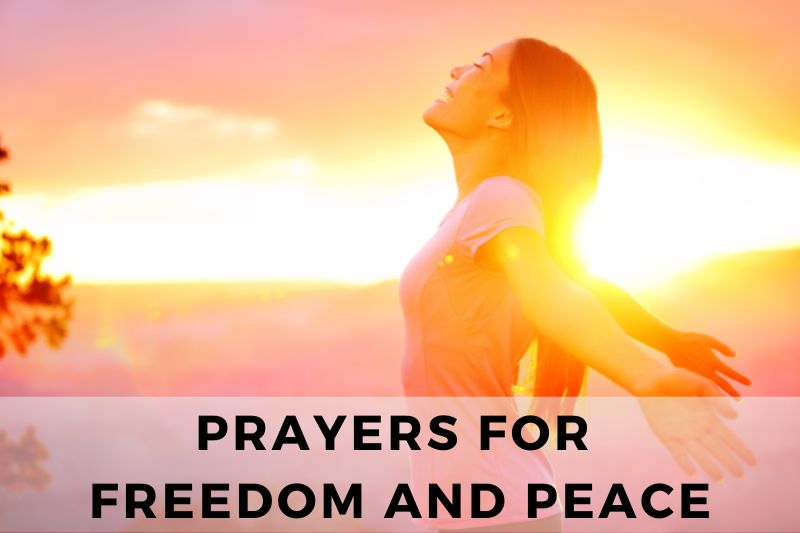The narrative of the “Slave’s Prayer of Freedom” encapsulates a profound essence within the Baha’i Faith, illustrating the interplay of liberation and divine grace. The story unfolds against the backdrop of historical oppression, exemplifying how the human spirit can transcend adversity through faith. This powerful prayer, originating from the depths of suffering and yearning for emancipation, serves as a poignant metaphor for all who seek liberation—spiritually, mentally, and physically.
Central to understanding this narrative is the context in which it arose. The historical backdrop is punctuated by the suffering of countless individuals subject to bondage and tyranny. It is under such duress that the “Slave’s Prayer of Freedom” emerges, articulating an urgent cry for deliverance. This invocation reflects not only the physical desire for emancipation from shackles but also a deeper spiritual longing for freedom from the constraints that bind the human soul.
The essence of the prayer lies in its transformative capacity. It speaks to the innate aspiration within every individual to transcend limitations. The metaphor of slavery here transcends mere physical captivity; it encompasses emotional, psychological, and spiritual enslavement. Such a perspective invites contemplation of the myriad forms of bondage that exist in contemporary society—whether they manifest as societal expectations, personal fears, or even misguided beliefs. Through this lens, the prayer can be perceived as a universal call to freedom, striking a resonant chord among those who seek liberation in various facets of their lives.
Within the rich tapestry of Baha’i teachings, the concept of freedom extends beyond its conventional interpretation. It is not merely an absence of restraint but a profound state of being that allows individuals to recognize their inherent potential. The “Slave’s Prayer of Freedom” encourages adherents to view their life experiences through the prism of divine providence, reminding them that even in the darkest moments, there resides the possibility of transformation and hope.
The language of the prayer itself is imbued with the spirit of surrender and trust in the Divine. Each phrase serves to draw believers closer to an understanding that true liberation transcends the physical realm. It challenges individuals to relinquish their attachments to temporal concerns, thus elevating their consciousness to the plane of spiritual awareness. Herein lies its unique appeal: it transforms despair into a cradle of hope, nourishing the soul’s desire for connection with the Almightiness of God.
Examining the prayer’s structure reveals the eloquence with which it conveys these themes. The repetitive invocations articulate a rhythm that echoes the longing of the human heart—a reminder that freedom is a journey, often fraught with trials, yet punctuated with moments of divine reassurance. This cyclical element within the prayer embodies the process of seeking: as one implores for freedom, the prayer becomes a catalyst for personal reflection and growth.
Moreover, the metaphor of bondage prompts an inquiry into the collective entrapments experienced by communities around the globe. It beckons individuals to recognize their interconnectedness and to take collective action against the injustices that perpetuate such enslavement. In this sense, the “Slave’s Prayer of Freedom” evolves into a clarion call, galvanizing believers towards social responsibility and justice, aligning with the Baha’i tenet of service to humanity.
The Baha’i teachings illuminate the notion that spiritual awakening is intrinsically linked to the pursuit of freedom. The prayer serves not just as a plea but as an invitation to engage actively in the liberation process. Baha’is are encouraged to reflect on their roles as facilitators of freedom for themselves and for others, fostering an environment where love, justice, and unity prevail. The ethos of the prayer resonates particularly in a world that is often mired in division and conflict, urging souls to rise above the cacophony of despair and embrace the sanctity of human dignity.
The stories woven within the fabric of this prayer stand as testament to the resilience of the human spirit. Each example of struggle reveals the potent intersection of faith and action. The journey from captivity to liberation is fraught with challenges, yet it is precisely this journey that cultivates strength and fortitude. Thus, the “Slave’s Prayer of Freedom” catalyzes a deeper understanding of the trials that shape character and the transformative power of hope.
As individuals engage with this prayer, they are invited to embark on a pilgrimage—not merely to seek freedom but to embody it in thoughts, words, and deeds. This pilgrimage entails a commitment to personal growth and societal upliftment, aligning individual efforts with the broader mission of global unity and peace. In essence, the “Slave’s Prayer of Freedom” becomes not only an individual supplication but a universal manifesto for justice and liberation.
In conclusion, the “Slave’s Prayer of Freedom” encapsulates a rich tapestry of themes that resonate deeply within the Baha’i faith and beyond. Its profound message transcends time and geography, offering insights into the human condition and the quest for liberation. Through its eloquence and depth, the prayer uniquely inspires adherents to engage actively in their spiritual journey, promoting a world liberated from the shackles of oppression—both inwardly and outwardly. In doing so, it invites all souls, regardless of their backgrounds, to join in the sacred endeavor of fostering freedom and peace for themselves and for humanity at large.
